
4 Steps to Handle Order Returns with Magento 2 Shipstation
Wondering to simplify your shipping process? Magento 2 Shipstation is a tool that links your Magento store with Shipstation. This connection makes order fulfillment easier by automating many steps.
This tutorial will cover how to streamline shipping accurately.
Key Takeaways
-
Find key features that make ShipStation ideal for managing orders.
-
See how ShipStation and Magento work together to streamline orders.
-
Follow the steps to set up ShipStation with Magento.
-
Use ShipStation’s analytics to improve your shipping efficiency.
-
Handle returns smoothly with 4 easy steps using Magento and ShipStation.
-
Compare pricing and plans to find the right ShipStation option for your business.
9 Key Features of Magento 2 ShipStation Connection
1. Automated Order Import
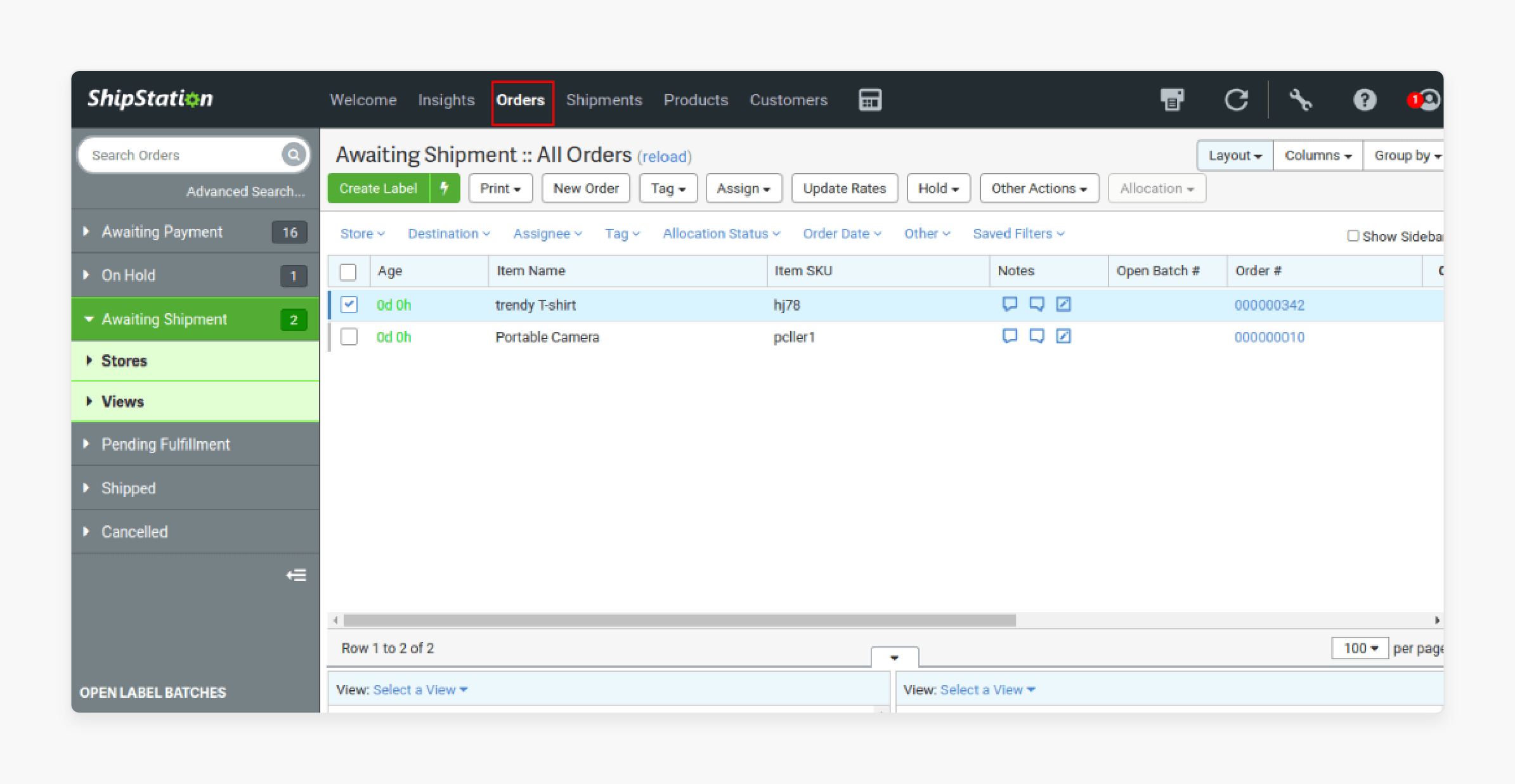
ShipStation connects with Magento integration through the ShipStation plugin. It pulls in orders from your Magento site. This removes the need for manual entry, reduces errors, and saves Magento users time. For example, a jewelry store with ShipStation integration managed more orders daily.
It avoids issues with ShipStation and processes orders faster. Orders sync in real-time, so your data is always up-to-date. It is essential for handling high volumes across multiple stores.
2. Multi-Carrier Shipstation Support
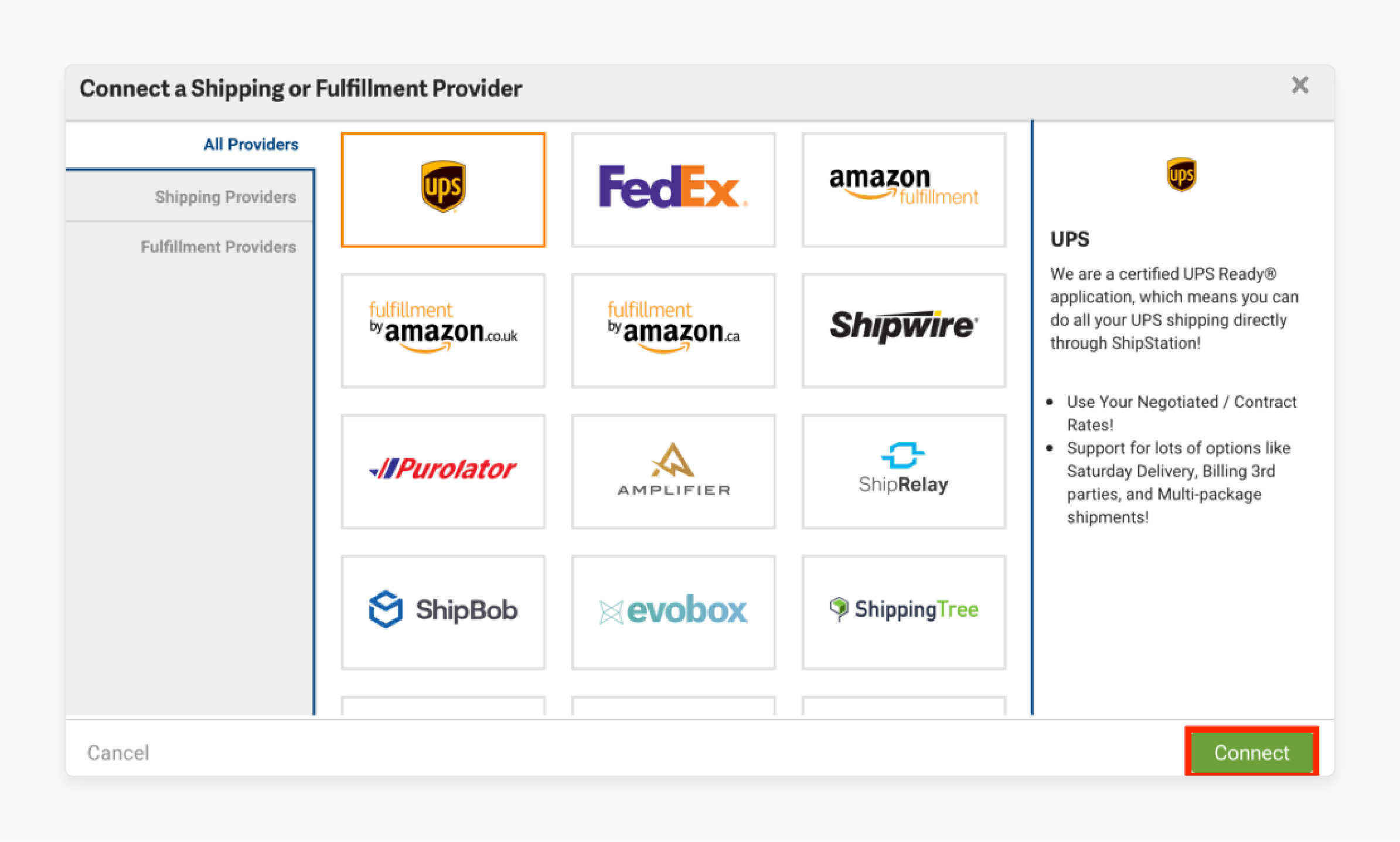
ShipStation offers access to USPS, UPS, FedEx, and others so you can pick the shipping platform. Users can compare shipping rates directly and get premier discounted rates. This lets Magento admin panel users manage all carrier selections. It is without switching systems, making management and shipping simpler.
For example, an apparel retailer used ShipStation’s multi-carrier feature. It chooses USPS for local orders and FedEx for international orders. It saves their shipping costs.
3. Batch Label Printing
ShipStation’s batch printing is ideal for admin users. Printing packing slips and branded labels in bulk makes fulfillment faster. For example, an electronics shop used Auctane ShipStation to print 200+ labels. It reduces label prep time for them. Selecting orders and printing labels with a few clicks can save time and meet deadlines.
4. Customizable Shipping Rules
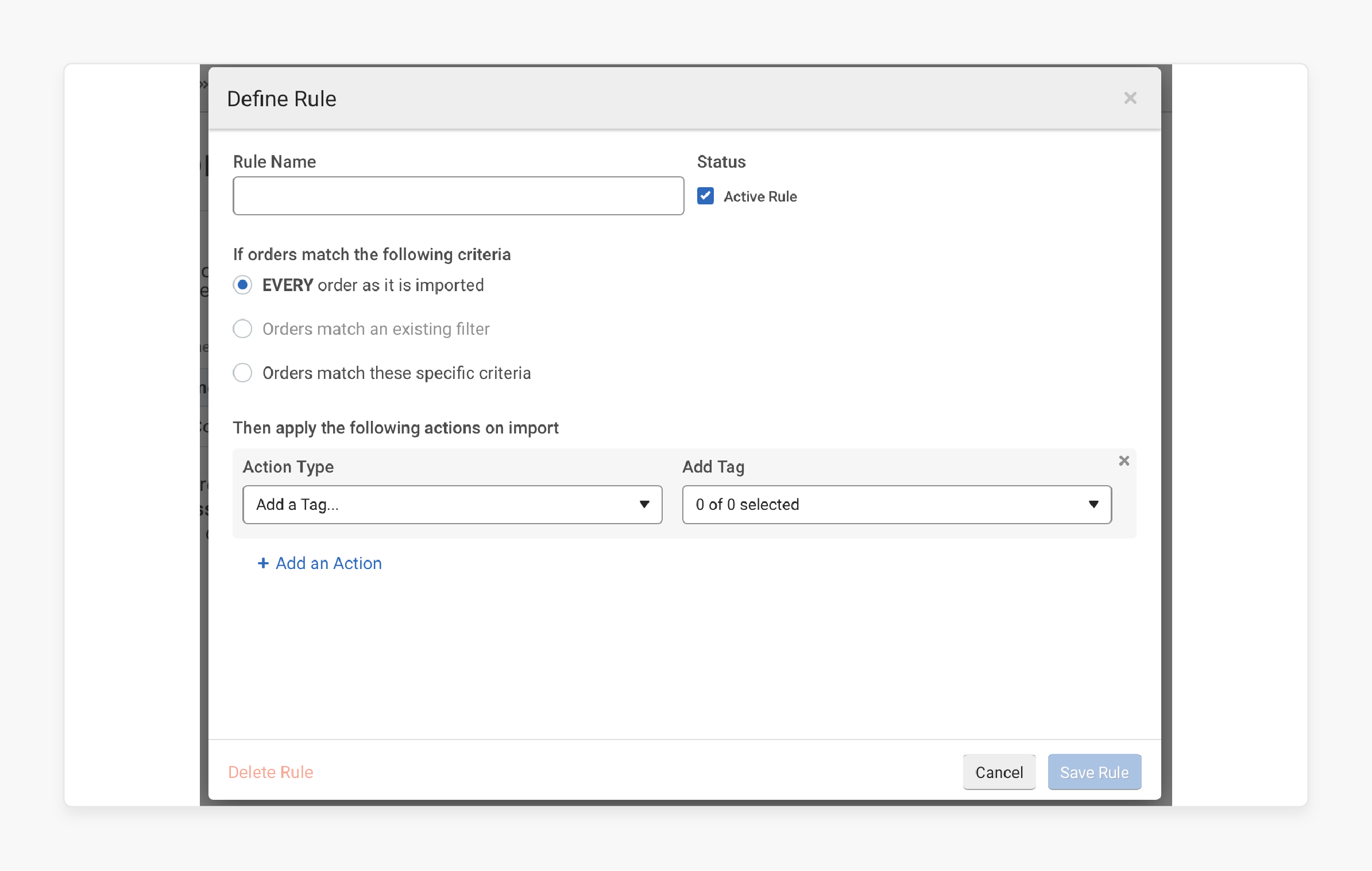
ShipStation lets you create rules based on weight, destination, or value. These rules simplify order status management by automating choices. It includes shipping method and applying discounted rates.
For example, a supplement store set a rule to offer free shipping on orders. Automated rules reduce human error, making shipping faster and more cost-effective.
5. Instant Tracking Updates
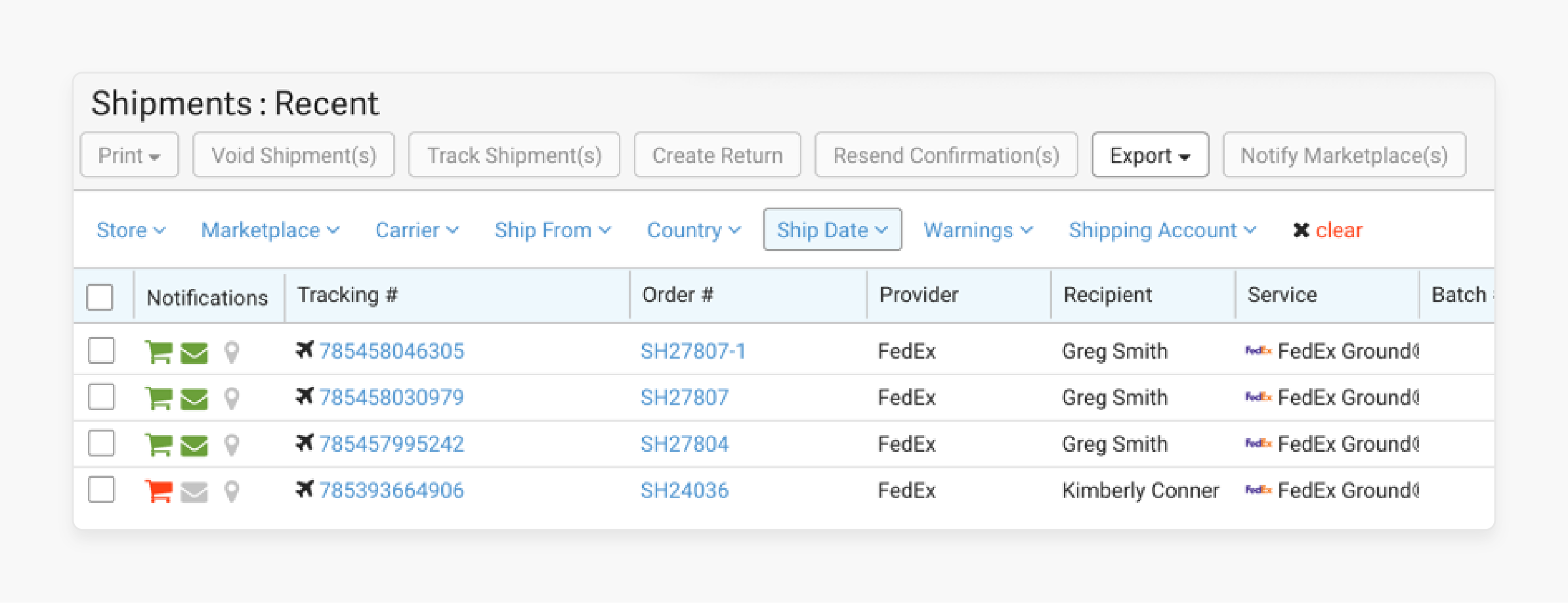
ShipStation provides tracking pages for customers when orders ship, reducing support queries. Live updates keep customers informed, building trust and improving satisfaction. For example, a decor store with ShipStation saw a drop in support calls about order status.
It gives the team more time to deal with complex issues. Automated updates allow users to manage orders smoothly, even in large volumes.
6. Branded Shipping Documents
ShipStation enables you to create branded labels, packing slips, and custom documents. It uses various logos and messages. This personalization adds a professional touch, boosting brand recall. For example, a skincare brand personalized its plugin with branded slips and notes. It helps them to increase their customer retention.
7. Inventory Management Integration
ShipStation connects with Adobe Commerce for instant inventory management, preventing overselling. For example, a sports retailer prevented stockouts during sales events. It syncs inventory with ShipStation and Magento, improving customer satisfaction.
This integration keeps stock data accurate in the Magento marketplace. It keeps your inventory updated across multiple stores.
8. International Shipping Support
ShipStation automates international shipping with customs forms and duties. This simplifies global orders by providing all required shipping information. For example, a handmade goods shop used ShipStation for international shipping.
It cut down the customs paperwork time and reached over countries. It reduces paperwork for cross-border shipping.
9. Comprehensive Reporting and Analytics
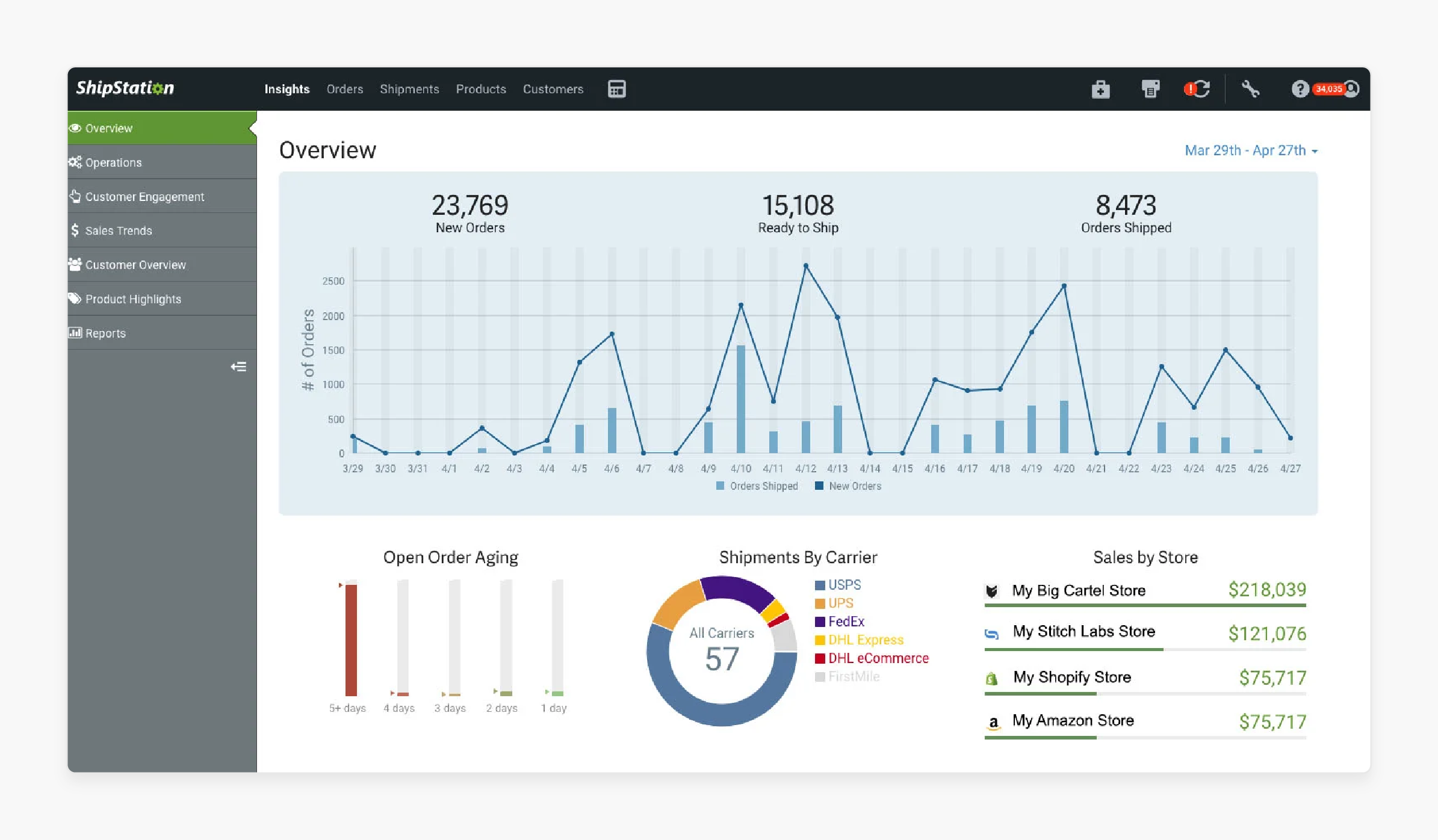
ShipStation’s reports provide shipping insights at your fingertips on costs and delivery times. These analytics help optimize your shipping platform of choice. It cuts costs and improves logistics. For example, a subscription box company used its analytics to identify cost carriers. It saves on shipping annually and improves delivery times.
How ShipStation Works with Magento 2 for Easy Order Management
-
Receive Orders: The ShipStation Magento 2 integration automatically pulls orders from Magento. It consolidates them in your account. This integration lets you view and manage orders from multiple Magento stores. With ShipStation automatically syncing orders, you can focus on efficient processing.
-
Manage Orders: Once orders sync, the extension provides tools to organize and track each order. You can monitor details, set priorities, and prepare orders for fulfillment. Tags and filters help control order destinations. They are easy to manage the workflows for a single Magento store or a multi vendor module.
-
Print Labels: ShipStation makes label creation fast. It allows you to generate labels in bulk. With just a few clicks, you have your shipping labels ready. It saves your time and simplifies the process. Install the extension on your Magento version to enable quick, organized label printing.
-
Automate Shipping, Updates, and Emails: ShipStation sends live shipping updates. It also sends its users confirmation emails to keep them informed throughout the process. This automation reduces the load on support and improves customer satisfaction. With shipping just a click away, it is a simple solution that can fit your needs.
7 Prerequisites for Magento ShipStation Setup
-
Magento 2 Admin Access: Make sure you have an active Magento 2 account with admin access. You will need this access to set up the integration in the admin panel.
-
ShipStation Account: Create an account if you still need to create one. New users can start your 30-day free trial to explore its features. An active account is required for the integration to work well.
-
API Key from ShipStation: Generate a key in your account. This key enables secure data exchange between Magento and ShipStation. It allows orders to sync and tracking updates to flow.
-
Plugin for ShipStation: Download and install the free extension that connects ShipStation. This plugin for ShipStation is necessary for live syncing. It ensures the integration works smoothly.
-
Compatible Version: Confirm that your Magento version is compatible with ShipStation. Compatibility ensures all features work correctly.
-
Server Configuration: Make sure your server meets the requirements. It is for both Magento and ShipStation. Correct server configuration supports data syncing and prevents integration issues.
-
Shipping Carrier Accounts in ShipStation: Set up your preferred carriers. It includes a free USPS postage account. This setup allows you to choose carriers for each order directly.
2 Steps to Connect Magento 2 with Shipstation
1. Setup in Magento Admin
Note: Before connecting, you need to install and enable the Auctane extension and generate an API Access Key.
Step 1: Download the Auctane-ShipStation module for Magento.
Step 2: Extract it to your Magento folder.
Step 3: Log in to Admin as an Administrator.
Step 4: Click System on the left, then select Cache Management under Tools.

Step 5: Choose Flush Magento Cache.
Step 6: Click System again and choose Web Setup Wizard from the left navigation panel.
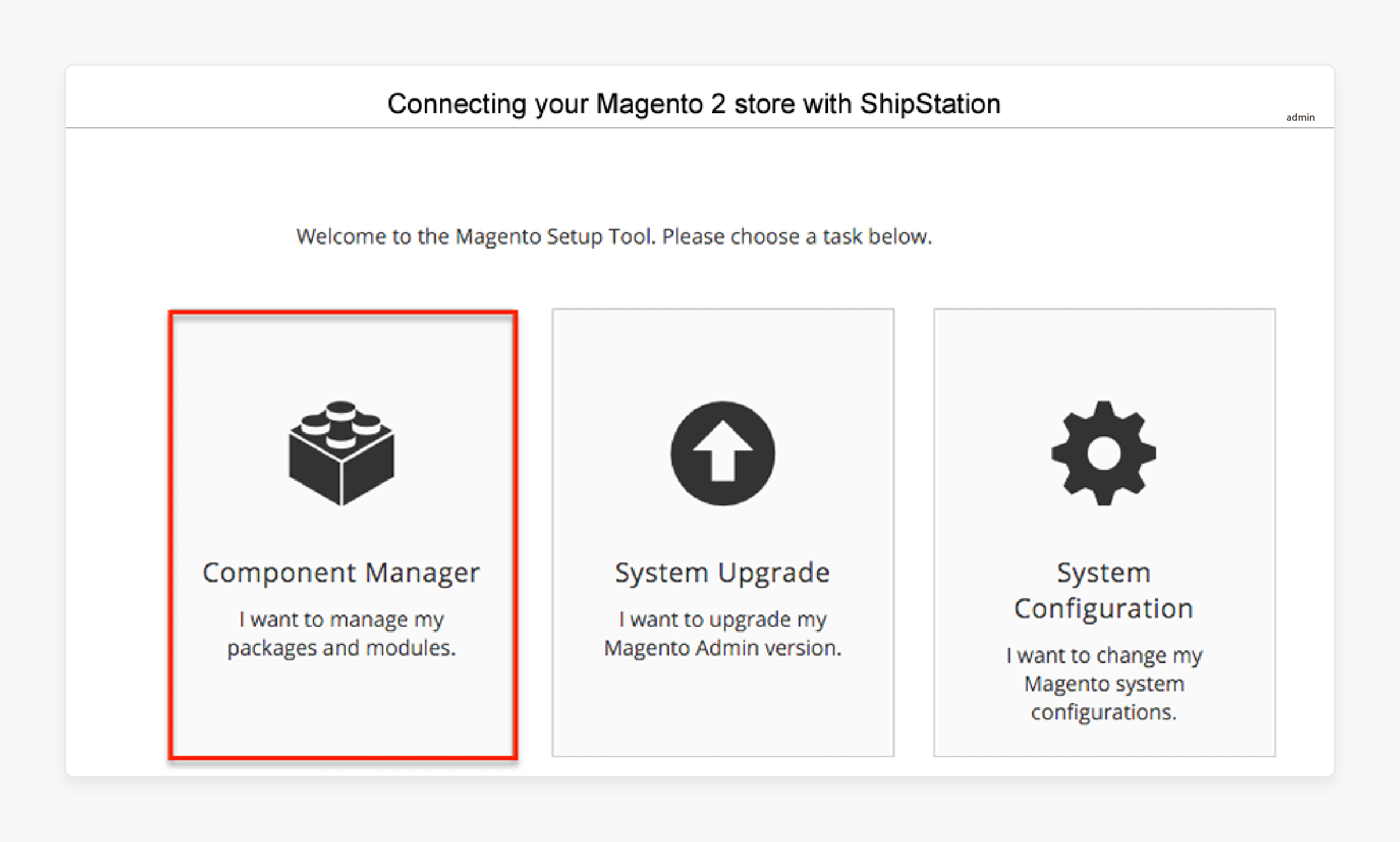
Step 7: Select Component Manager and proceed to Manage your components.
Step 8: Find the Auctane_API module in the list and select Enable from the Actions column.
Step 9: Click Next.
Note: Back up existing Code, Media, and Database files. If needed, consult a store developer or Magento solutions partner.
Step 10: Click Enable.

Step 11: In Magento Admin, go to Stores > ShipStation > General Settings.
Step 12: Generate your ShipStation API Key to connect.
2. Setup in ShipStation
Note: Generating the API Key after setting up the Auctane module.
Step 1: Log into your ShipStation account.
Step 2: Go to Account Settings (the wrench icon in the upper right).
Step 3: Select Selling Channels, then choose Store Setup from the left sidebar.
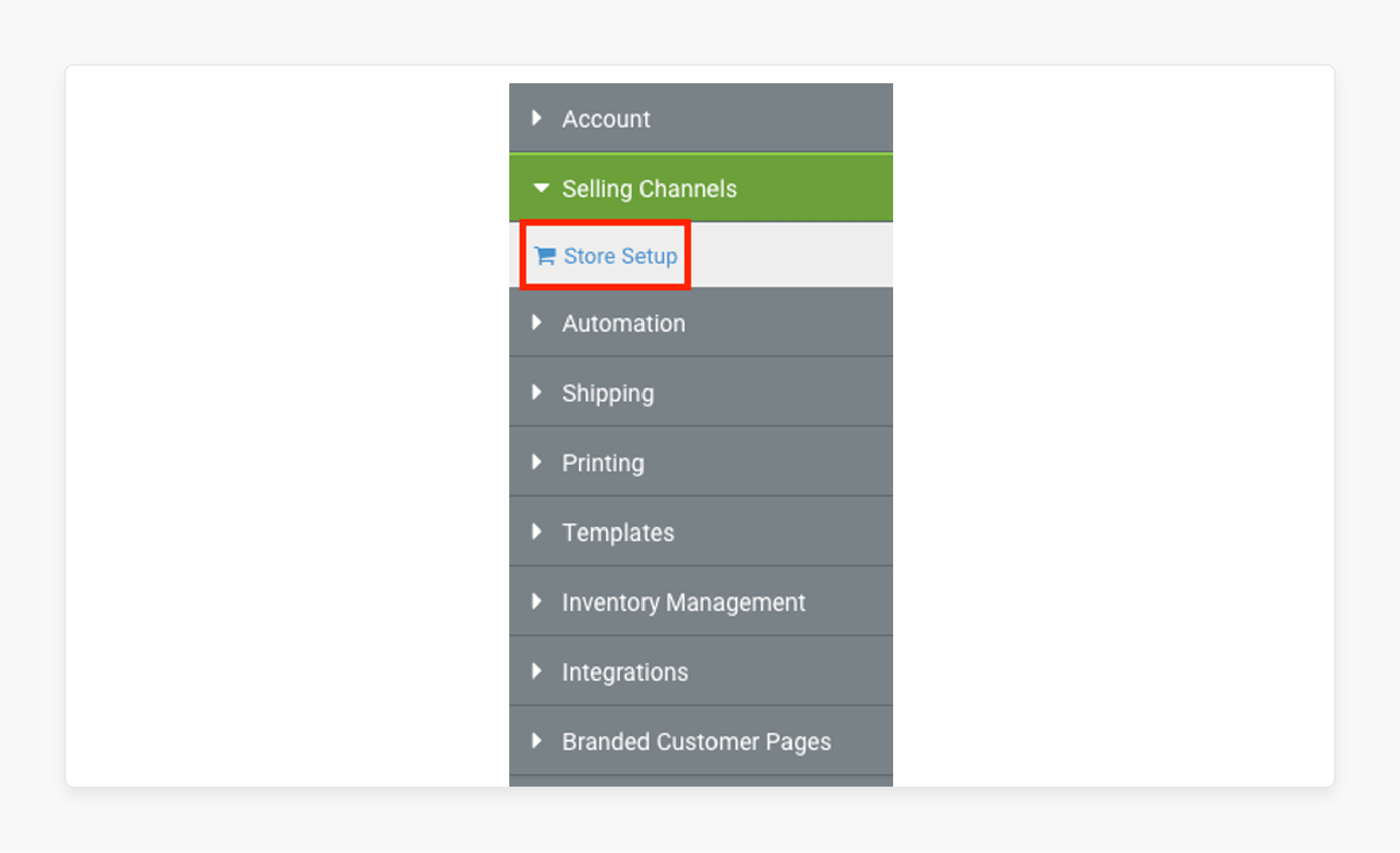
Step 4: Click the green + Connect a Store or Marketplace button.

Step 5: Scroll or search for the Magento connection option and select it.
Step 6: In the dropdown, select Magento 2.3+ to use your API Key.
Step 7: Enter the Magento ShipStation API Key generated earlier in the connection window.
Step 8: Enter your Store URL in the connection window, using HTTPS if possible.
Tip: Find the Store URL under Stores > Configuration > General > Web > Base URLs (or Base URLs (Secure) for HTTPS).
Note: For multi-store setups, set the Store View to the specific store you are connecting.
Step 9: Click Test Connection to confirm the steps worked.
Step 10: ShipStation will apply standard Magento status mappings. Adjust any custom mappings as needed.
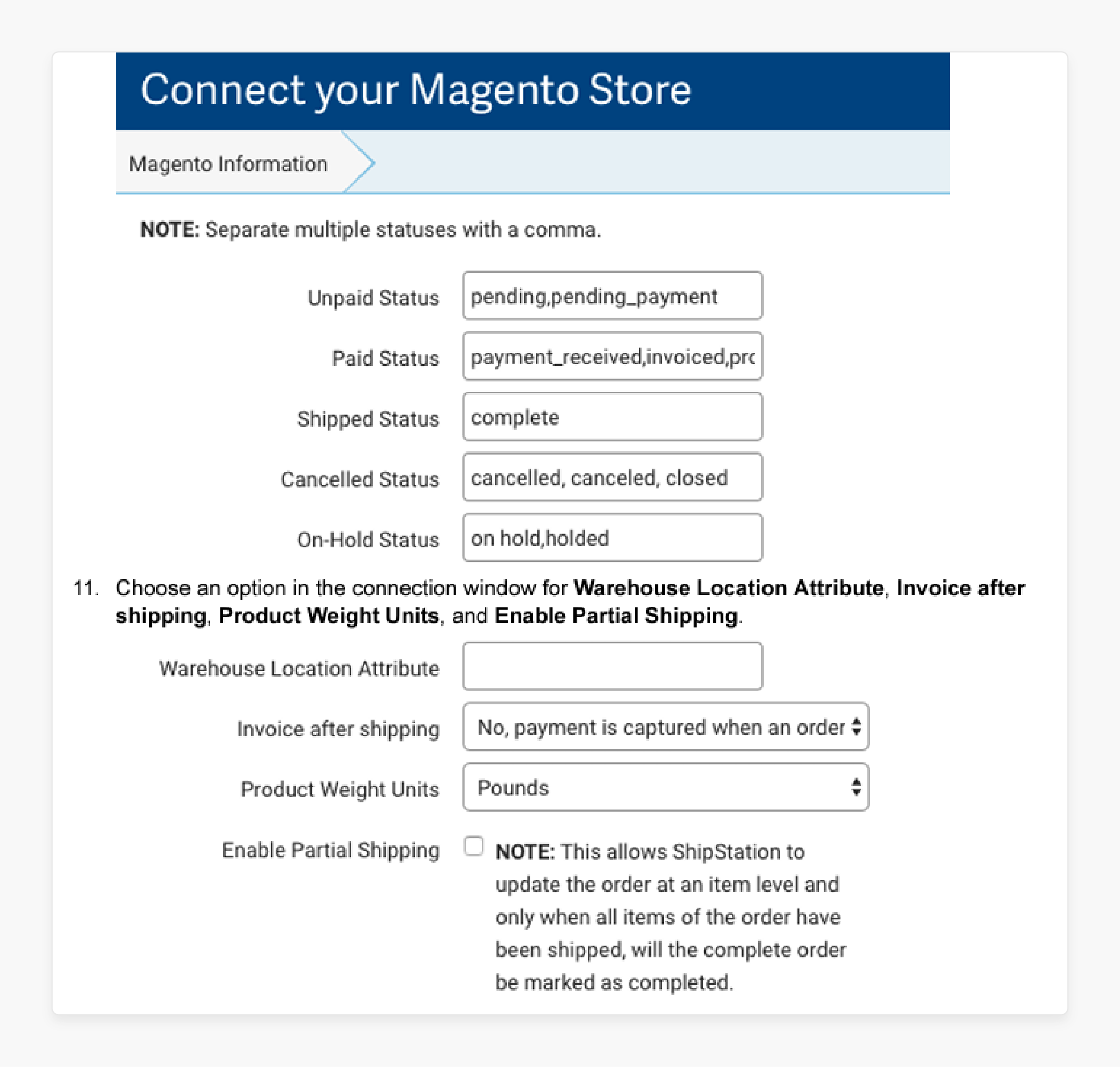
Step 11: Choose options in the connection window. These options include:
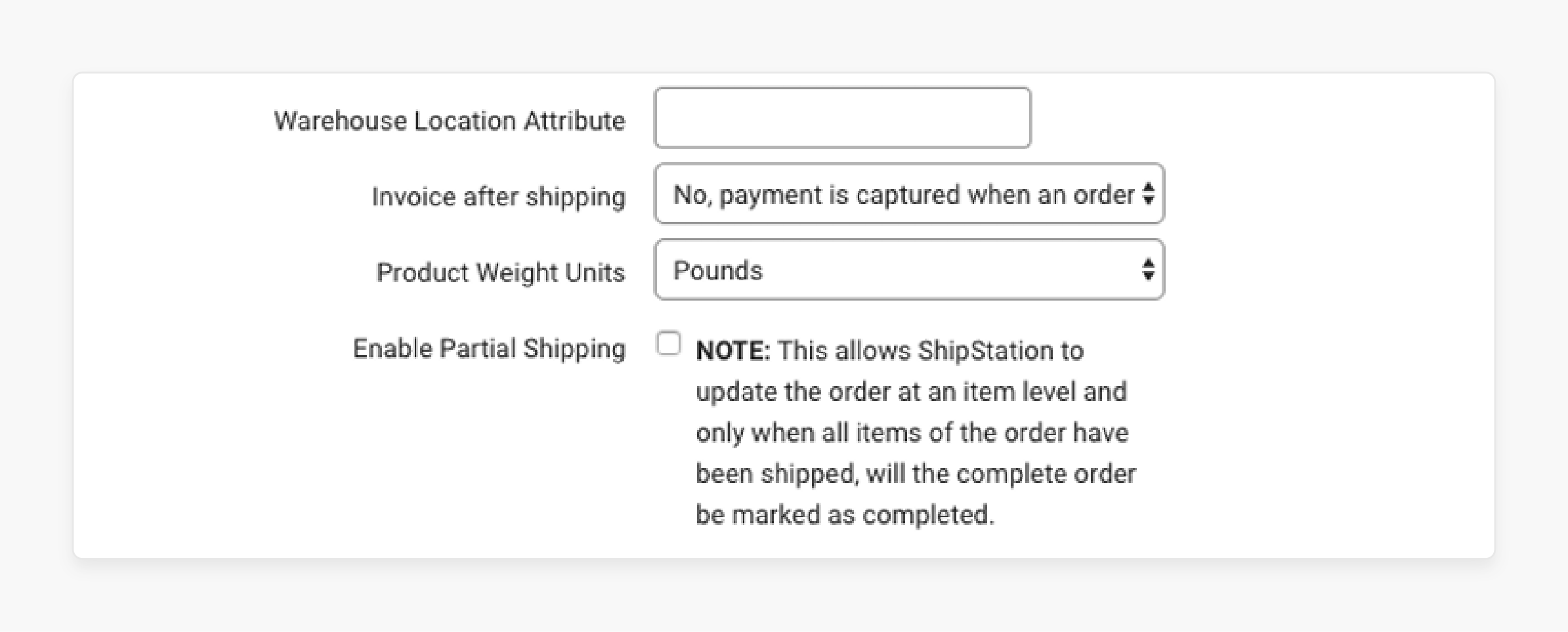
-
Warehouse Location Attribute
-
Invoice after shipping
-
Product Weight Units
-
Enable Partial Shipping.
Step 12: Click Connect to activate the store in ShipStation.
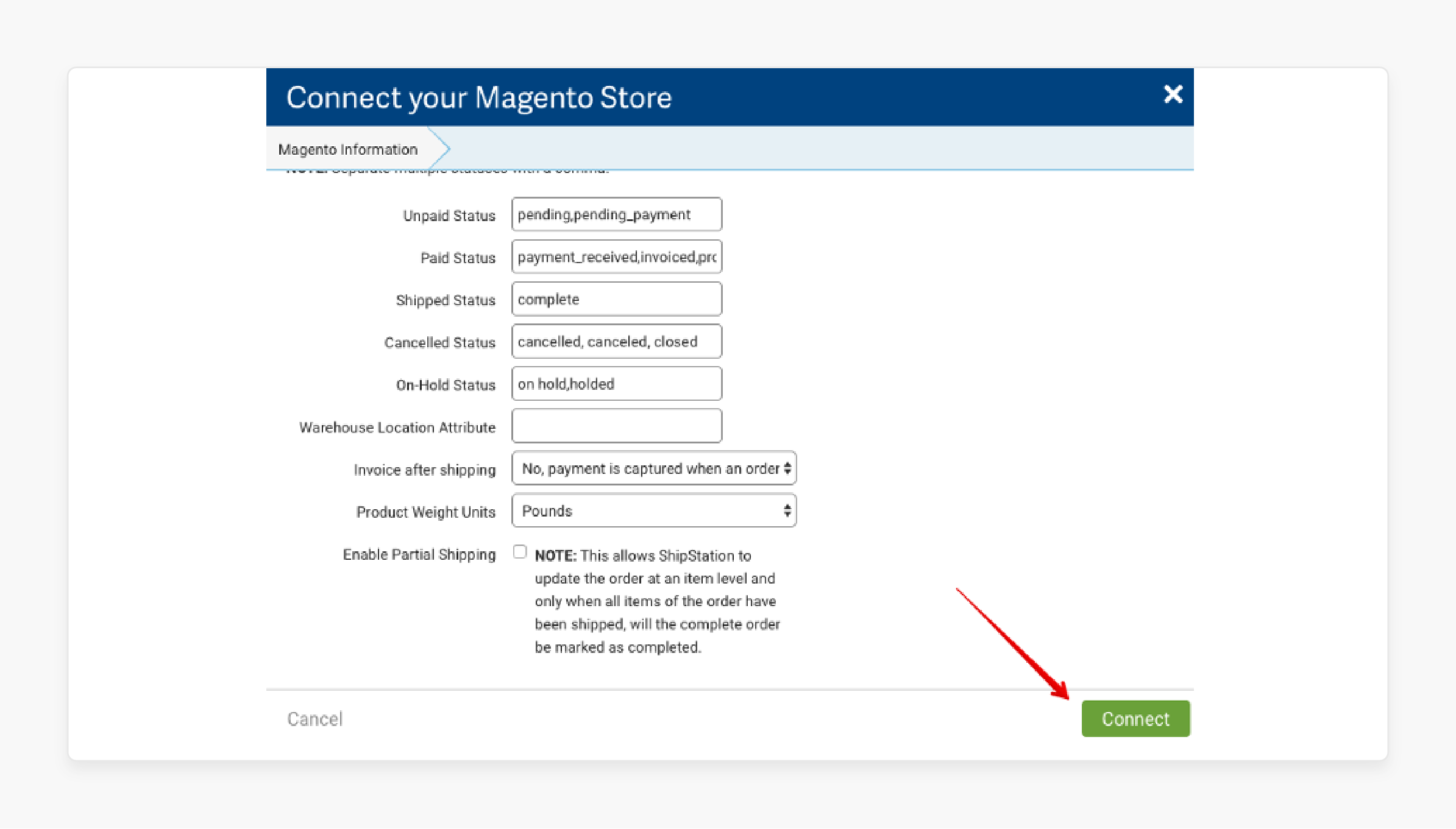
Analytics and Reporting in Magento ShipStation
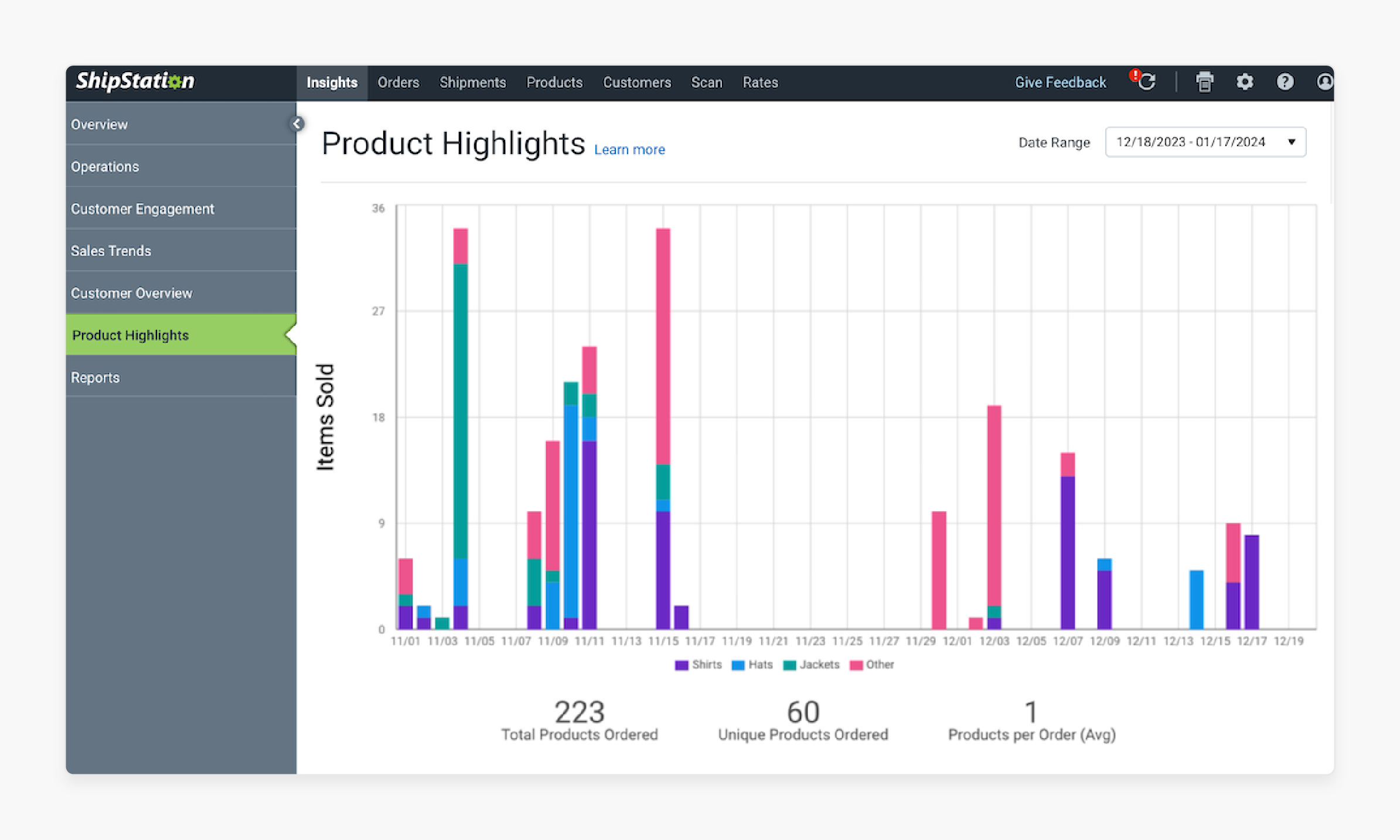
ShipStation provides many reporting options to help you gather data on orders. It gives information on importing and shipments created within the platform.
-
The Insights pages in ShipStation include dashboards with charts and graphs. These offer a clear view of business trends. ShipStation shipping volume and other key data support your goals.
-
The Insights Reports page has pre-formatted reports. Users can view directly in the app or export as PDF, CSV, Excel, or text files. Customization options vary by report type. The data can be filtered by dates, selling channel, carrier, account, SKU, and more.
-
The Reports tab in the sidebar gives you quick access to each report section.
-
The Export Orders and Export Shipments options let you build custom reports. It includes only the data you need.
4 Steps to Handle Returns with Magento 2 Shipstation
Step 1: Issue RMAs in Magento
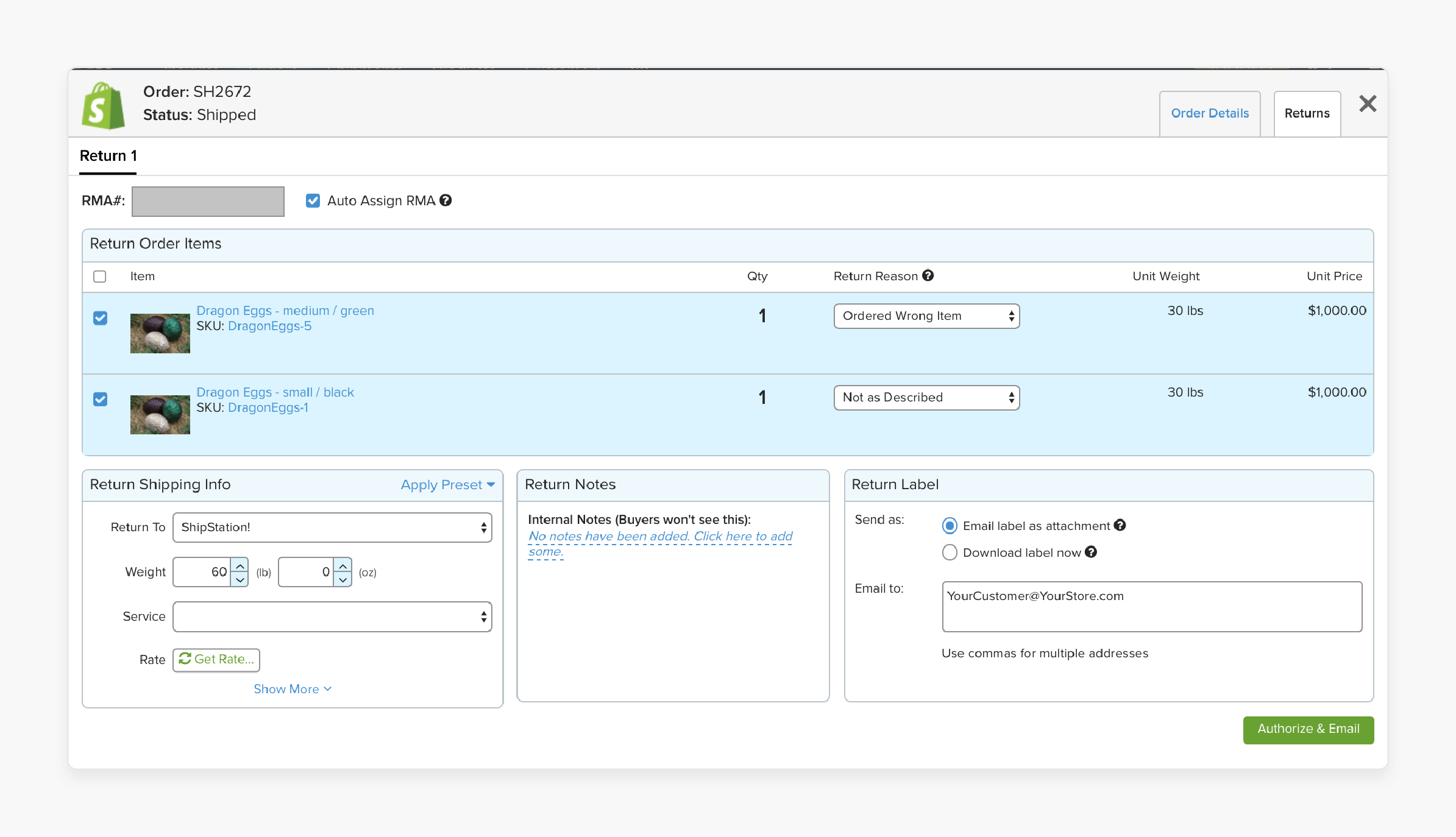
-
Access your shipped orders or shipments in the Admin.
-
Locate the order that needs a Return Merchandise Authorization (RMA).
-
Issue it through ShipStation. This structured approach, called ShipStation, ensures that returns are tracked from the start.
Step 2: Generate and Send Return Labels
With ShipStation’s return workflow, you can create a return label for each order. You can choose to email the label to the customer or download it directly. It provides return labels in a way that best suits each customer, making shipping just a click away.
Step 3: Track Returns in ShipStation
ShipStation allows you to monitor the status of each return shipment. You can see when the customer has shipped the return and check its location. The tracking saves you time and keeps you informed at every step.
Step 4: Analyze Return Data with ShipStation Reports
Use ShipStation’s Returned Products report to see patterns in return data. These insights help you find recurring issues. It includes product quality concerns or shipping damages. This data allows you to improve processes and help them control where highly operations are maintained.
Magento 2 Shipstation Pricing and Subscription Plans
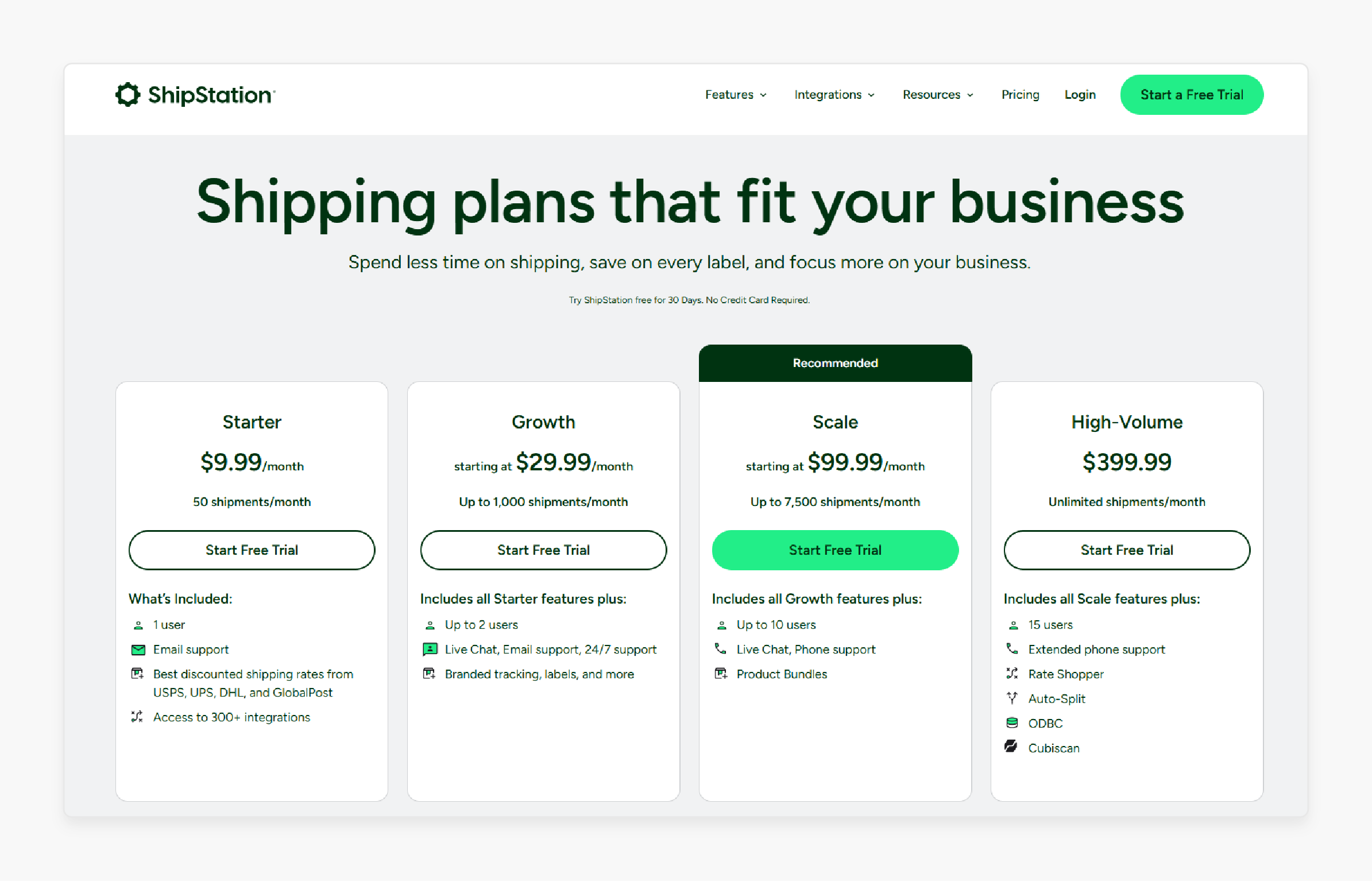
1. Starter Plan
Price: $9.99/month
Shipments: Up to 50 per month
Features Included:
-
1 user access
-
Email support only
-
Discounted rates from carriers like USPS, UPS, DHL, and GlobalPost
-
300+ integrations with e-commerce platforms.
2. Growth Plan
Price: Starts at $29.99/month
Shipments: Up to 1,000 per month
Extra Features (Includes all Starter features):
-
Up to 2 users
-
24/7 support via live chat and email
-
Branded tracking, labels, and more to create an extension of your brand.
3. Scale Plan
Price: Starts at $99.99/month
Shipments: Up to 7,500 per month
Extra Features (Includes all Growth features):
-
Up to 10 users
-
Live chat and phone support for faster help
-
Product Bundles to manage bundled items in shipments.
4. High-Volume Plan
Price: $399.99/month
Shipments: Unlimited
Extra Features (Includes all Scale features):
-
15 users
-
Extended phone support for priority assistance
-
Advanced tools:
-
Rate Shopper to find the best shipping rates.
-
Auto-Split to divide shipments as needed.
-
ODBC for advanced database connectivity.
-
Cubiscan integration for package dimension automation.
-
FAQs
1. What is the purpose of integrating ShipStation with a Magento store?
The ShipStation Magento integration automates shipping by pulling orders from Magento into ShipStation. It centralizes order handling and offers bulk label printing and branded tracking. This setup helps ecommerce businesses cut manual work and manage shipping easily.
2. How does ShipStation save time in managing ecommerce orders?
ShipStation saves you time by automating order imports, label creation, and tracking updates. This reduces manual work so that you can focus on growth. With shipping just a click away, you can process orders quickly and efficiently.
3. Is ShipStation compatible with Magento 2.4.4?
ShipStation works with Magento 2.4.4 through the ShipStation extension. While issues are rare, you might see syncing delays or missing orders. Checkout settings fix these problems.
4. How can ShipStation improve the fulfillment process for Magento-based ecommerce businesses?
ShipStation provides tools for better ecommerce fulfillment. It includes real-time tracking, custom rules, and labels. By automating tasks and adding branding, fulfillment becomes an extension of your brand. It gives customers a professional experience.
5. How do I upgrade my Magento account to enable ShipStation integration?
To upgrade your Magento account, install the ShipStation extension from Magento’s marketplace. Then, pick a subscription plan. They offer a 30-day free trial to let you test features before committing.
6. How does the ShipStation Community benefit Magento store owners?
The ShipStation Community is a support network for Magento store owners. It includes forums, guides, and tips. This resource helps you learn Shipstation integration features. It resolves issues with ShipStation and improves workflows. The community aids in optimizing your setup.
Summary
Magento 2 ShipStation connects Magento with ShipStation’s shipping platform. It lets store owners automate order imports and generate labels quickly. The tool makes shipping just a click away for many users to help them control Magento orders. Consider the following features-
-
Multi-Carrier Support: Access USPS, UPS, and FedEx. Use filters to help them control shipping options.
-
Batch Label Printing: Generate labels in bulk, making fulfillment an extension of efficiency.
-
Customizable Shipping Rules: Set rules with Magento 2 extensions for customization.
-
Live Tracking Updates: Customers get live updates, with shipping just a click away.
Explore Magento hosting services with ShipStation to simplify your shipping process.



